|
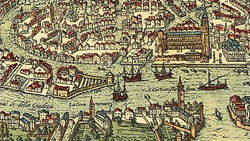
Venice before 1630
In the first decades of 17th century, from many points of view,
Venice was having some problems: economic (ruthless competition
from the French, English and Flemish merchants), political (alliance
with France, tension with Spain and even greater problems with the
Papacy, resulting in the Interdict) and military (the war against
the Uscocchi pirates for hegemony on the Adriatic and the war for
the succession of Mantua).
|
| |
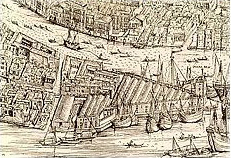 Venice
began to take on a different role in the balance of European politics,
and was certainly more in the background than in previous centuries. Venice
began to take on a different role in the balance of European politics,
and was certainly more in the background than in previous centuries.
It is in this context that, 54 years after the terrible plague
of 1575-77, the disease gripped the city once more, taking tens
of thousands of victims. |
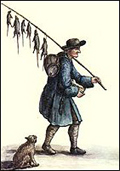
The plague As well as military defeat, the War of Mantua
brought Venice the plague.
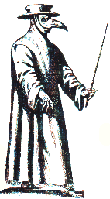
The city found itself paralysed once again: traffic diminished,
the nobility took refuge in their country homes, and the population
was greatly reduced, roaming the city asking for charity.
Yet once again the government acted with decision and firmness:
it coordinated the disinfecting of the city, sequestered entire
neighbourhoods, set up the quarantine hospitals and buried the infected
dead under lime. Unfortunately, not even these sanitary measures
could halt the spread of the disease.
|
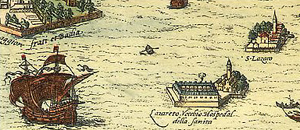
The quarantine hospitals In 1423 Venice became the first
state to have a special building for treating people with infectious
diseases. The island of S. Maria di Nazareth was chosen as the ideal
site for containing disease and guaranteeing isolation.
The isolation hospital was a place of both prevention and cure,
where the ill were treated and where much attention was paid to
separating the sick from the convalescents and the “suspected
ill”.
The birth of the quarantine hospitals is testimony to the Republic’s
revolutionary acts regarding hygiene.
|
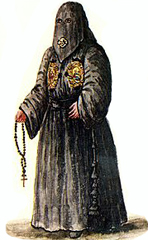 Impotence
and superstition Impotence
and superstition The atmosphere in Venice was of dejection
and lack of faith. In this climate of fear it is easy to understand
the Venetians’ suspicion that the plague had been deliberately
caused by “plague-spreaders”.
Some French people were suspected of spreading the illness, but
this merely shows the Venetians’ psychological state after
succumbing to the terrible disease so soon after the epidemic of
the late 1500s.
It should be mentioned that Milan was ravaged by the plague during
the same period, as described by Manzoni in “The Betrothed”,
and there were trials against suspected plague-spreaders. At such
times there is always room for superstition and fanaticism.
|
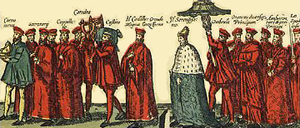 The
vow The
vow In spite of strict sanitary measures the plague did
not seem to decline and so the Senate turned to divine help once
more.
On October 22, 1630, Doge Nicolò Contarini made a public
vow to erect a church called the Salute, asking for the Virgin Mary’s
divine intercession to rid the city of the plague. The first stone
was laid with the plague still raging through the city and the church
was consecrated in 1687. |
| The end of the plague
In November, 1631,
the plague was definitively eradicated, but at a terrible cost:
almost 47,000 died in the city (more than a quarter of the population)
and 95,000 in the so-called Dogado, comprising Murano, Malamocco
and Chioggia.
|
|